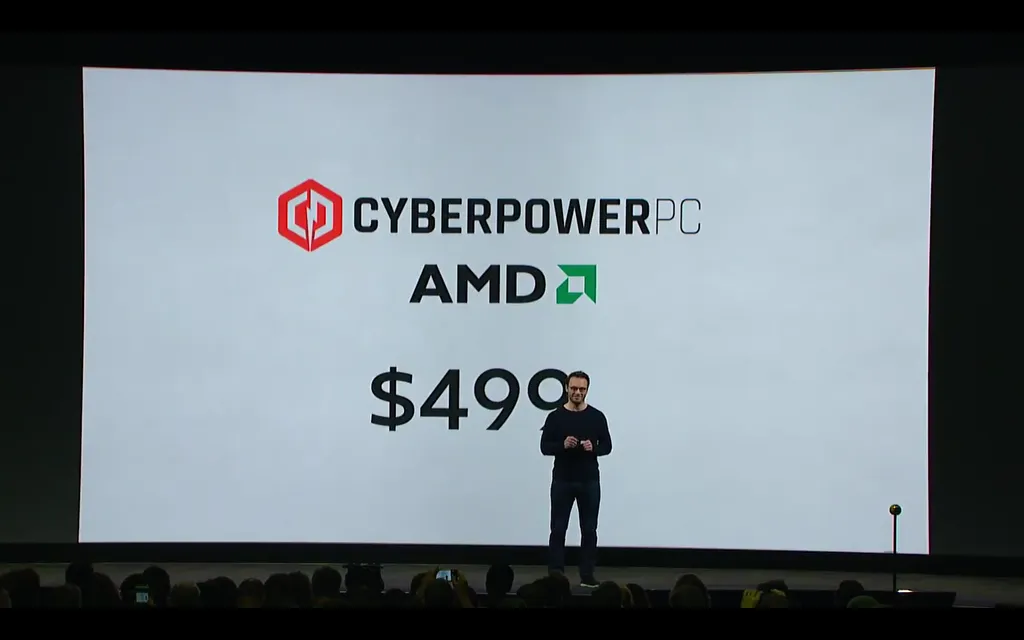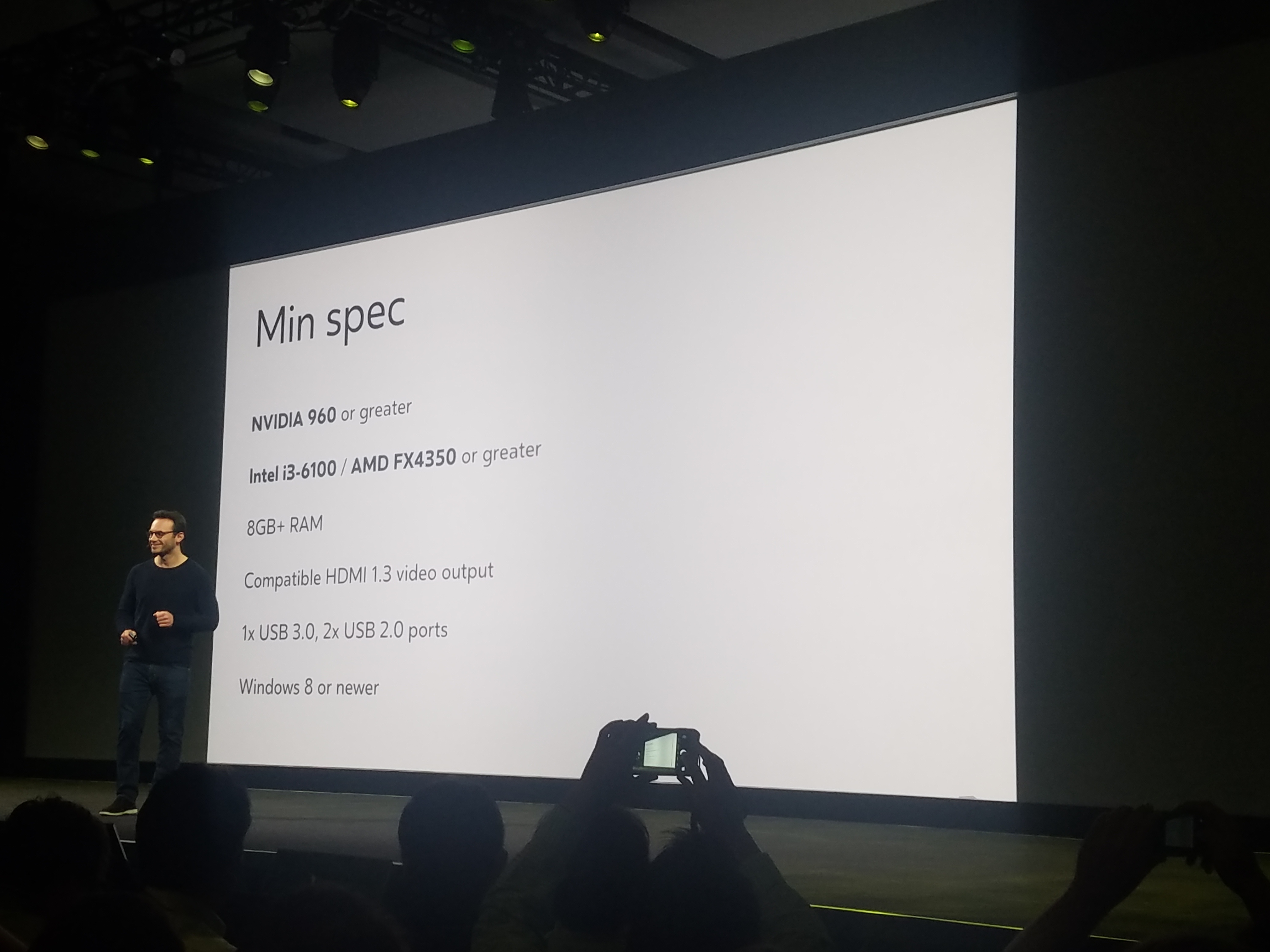We’ve never actually seen the minimum specifications for the Oculus Rift. Oculus has only revealed a recommended spec in the past. That changed today.
During the 2016 Oculus Connect keynote speech, company CEO Brendan Iribe pulled back the curtain on a minimum spec for VR capable machines. The list includes an Nvidia 960 graphics card, Intel i3-6100/AMD FX4350 processor, 8GB+ RAM, and the usual HDMI and USB requirements along with Windows 8 OS. True, that’s lower than the previously provided set of specs, which included an Nvidia 970 or AMD 290 card and Intel i5-4590 processor, but those are the recommended specs, not minimum.
The wording is different but the bottom line is the same: less expensive PCs can now support the Oculus Rift. To that end, Iribe announced some new additions to the VR ready PC line. Cyber Power revealed a new machine that meets the minimum spec on AMD-based hardware for $499. That means you can now get everything needed to play an Oculus Rift for around $1,100. When it comes to Oculus’ own line of Oculus Ready PCs, the company is adding laptops from Asus, Alienware, Lenovo and Aorus.
So how is this possible? According to Iribe, it’s thanks to the introduction of several predictive techniques that can help lower powered hardware mainstain solid framerates. He spoke of asynchroncus timewarp, a technique that many developers will already be used to. It’s essentially a method of predicting where the user is going to look next to assist with renedering and other intensive processes.
Timewarp only adresses the direction you’re looking in, however, and not the actual position of your head. To address this factor, Iribe introduced what Oculus calls asynchronus spacewarp, something he claimed no one had ever done before which aims to fix positional juddering and ghosting. This process takes the two previous frames in an app the user is inside, analyses the difference between them, and then predicts and generates a new synthetic frame.
In other words, it calculates where your head was in previous frames to project a synthetic image every other frame. This allows an app to run at 45 real frames per second, with synethic frames being used to then bring it back to the Oculus minimum standard of 90fps. It reminds us in a way of 120fps reprojection on PlayStation VR, but only so far as Oculus is artificially manipulating a framerate to free up a machine’s bandwidth.
Techniques like this are constantly helping to lessen the demand that VR puts on PCs. This time next year the barrier to entry for VR could be lower than ever.






























